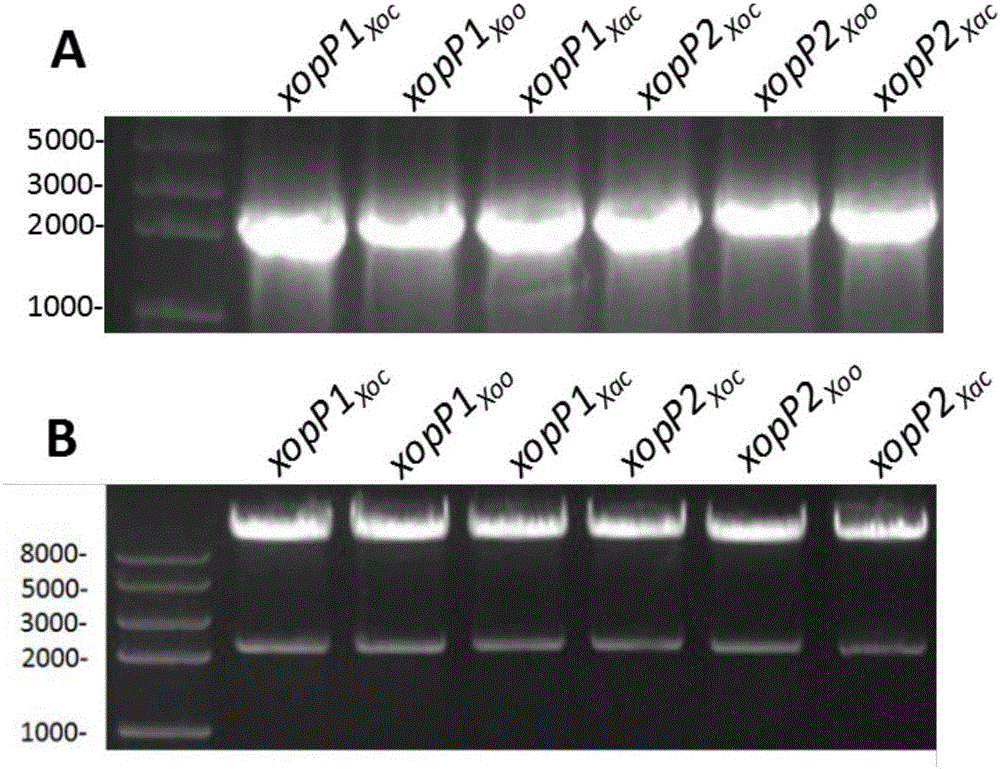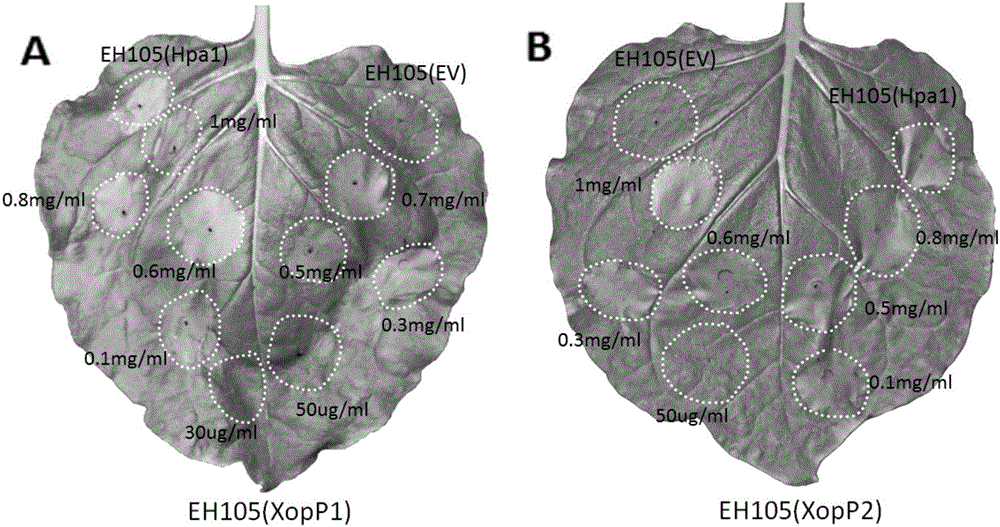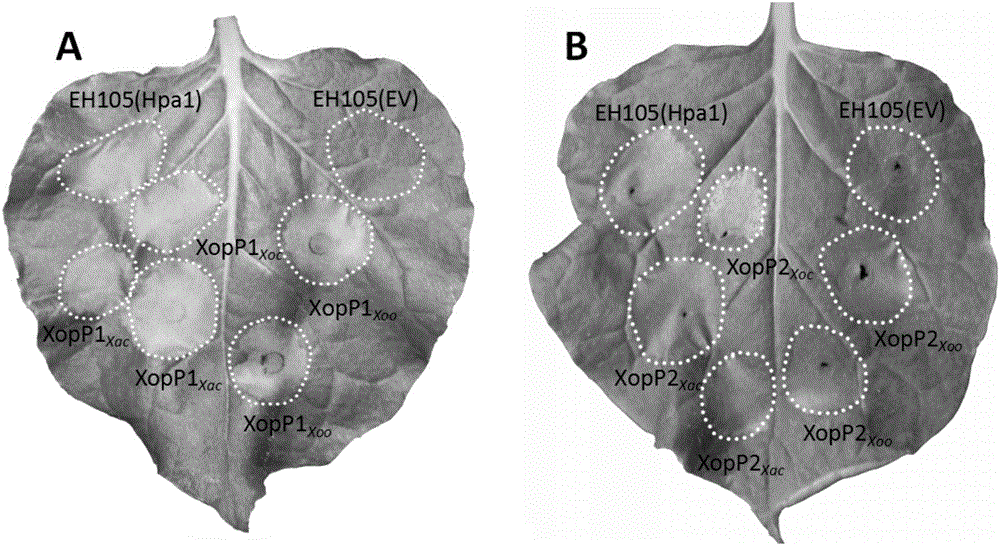Protein for stimulating hypersensitive response of plants and encoding genes of protein
An allergic reaction and protein technology, which is applied in the fields of plant genetic improvement, plant products, genetic engineering, etc., can solve the problem of undiscovered disease-resistant immune response XopP protein, etc., and achieve the effect of important practical value
- Summary
- Abstract
- Description
- Claims
- Application Information
AI Technical Summary
Problems solved by technology
Method used
Image
Examples
Embodiment 1
[0032] Embodiment 1, phytopathogenic Xanthomonas xopP gene prokaryotic expression vector construction
[0033] The present embodiment is obtained from the Xoc RS105 bacterial strain of the rice stripe bacterium, Xoo PXO99 of the rice bacterial blight bacterium A The xopP gene in bacterial strain and Xac 29-1 strain DNA of X. citri was used as a template, and primers xopP1-F / R (SEQ ID NO.3 and NO.4) and xopP2-F / R (SEQ ID NO.5 and NO. 6) Perform PCR amplification, and the PCR amplification conditions are: 94°C / 4min+(94°C / 30sec+55°C / 30sec+72°C / 2min)×32 cycles+72°C / 10min.
[0034] Using the primer Xopp1-F whose sequence is shown in SEQ ID NO.5 and the primer Xopp1-R whose sequence is shown in SEQ ID NO.6, through PCR amplification, it can be obtained from rice stripe Xoc RS105 strain, rice bacterial blight Germ Xoo PXO99 AThe xopP1 gene is amplified from the genomic DNA of the bacterial strain and Xac 29-1 strain of Xacillus citri, the nucleotide sequence of which is shown in SE...
Embodiment 2
[0040] Example 2, XopP Observation of Anaphylaxis on Tobacco Mediated by Agrobacterium
[0041] Activate the Agrobacterium strains EH105 (XopP1) and EH105 (XopP2) to be determined on a fresh plate, EH105 (EV) as a negative control, and EH105 (Hpa1) as a positive control, respectively transferred to the liquid medium of LB For mutants or zygotes, the corresponding antibiotics should be added, shake culture at 28°C for about 12-16 hours, and the bacterial concentration should reach 10 8 CFU / mL; collect the bacteria by low-speed centrifugation (600 = 0.6. Select moderately growing tobacco from the greenhouse and leave it at room temperature for 24 hours. Use a sterile needle to gently poke the inoculation port on the back of the leaf (be careful not to break the leaf), draw the bacterial solution into a needle-free sterile syringe, and mark it on the leaf Injection range, observe the phenotype after about 48 hours, and take pictures. In this example, Sansheng tobacco is Nicotia...
Embodiment 3
[0042] Embodiment 3, XopP stimulates the determination of the minimum concentration of tobacco allergic reaction
[0043] In this example, XopP adjusts different concentration values and inoculates Sansheng tobacco respectively to determine the minimum HR excitation concentration. At the same time, inject tobacco with the same concentration of Hpa1 as a positive control, and Agrobacterium with an empty plasmid as a negative control. After 48 hours, observe the tobacco Allergic reaction to leaves. It was found that the minimum concentration of XopP to stimulate HR was 0.1 mg / ml (see figure 2 ).
PUM
| Property | Measurement | Unit |
|---|---|---|
| Molecular weight | aaaaa | aaaaa |
Abstract
Description
Claims
Application Information
 Login to View More
Login to View More - R&D
- Intellectual Property
- Life Sciences
- Materials
- Tech Scout
- Unparalleled Data Quality
- Higher Quality Content
- 60% Fewer Hallucinations
Browse by: Latest US Patents, China's latest patents, Technical Efficacy Thesaurus, Application Domain, Technology Topic, Popular Technical Reports.
© 2025 PatSnap. All rights reserved.Legal|Privacy policy|Modern Slavery Act Transparency Statement|Sitemap|About US| Contact US: help@patsnap.com



